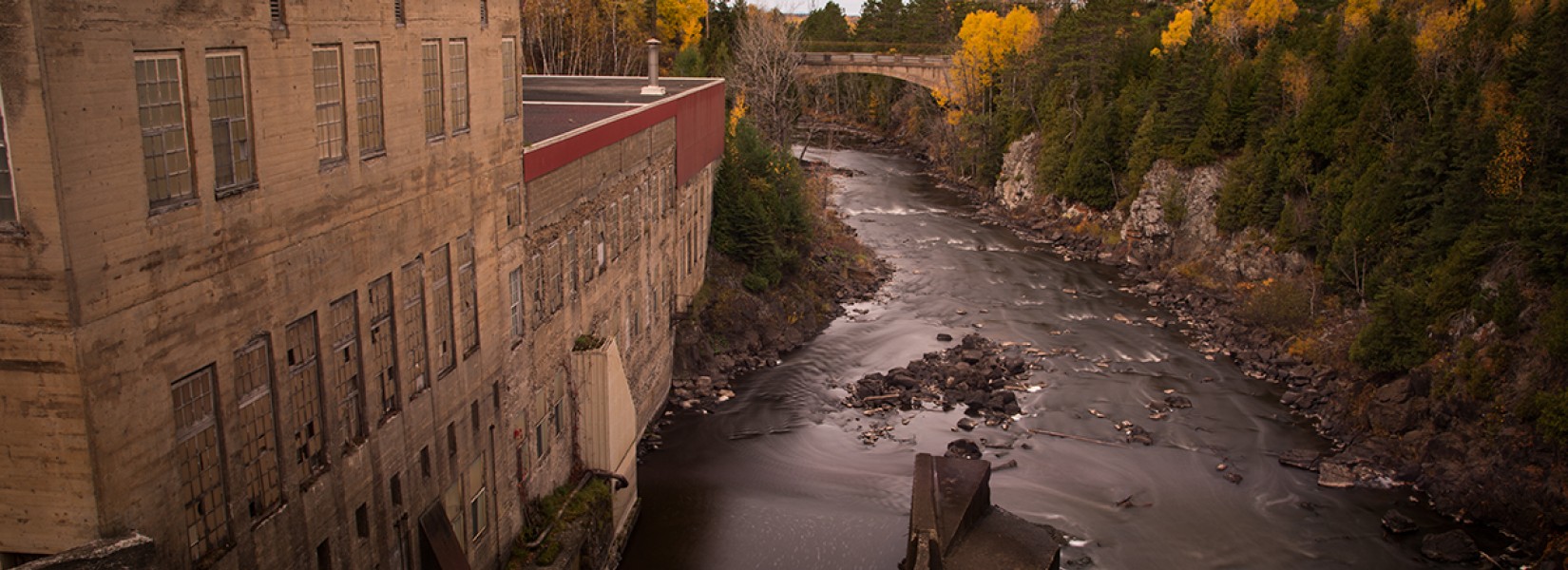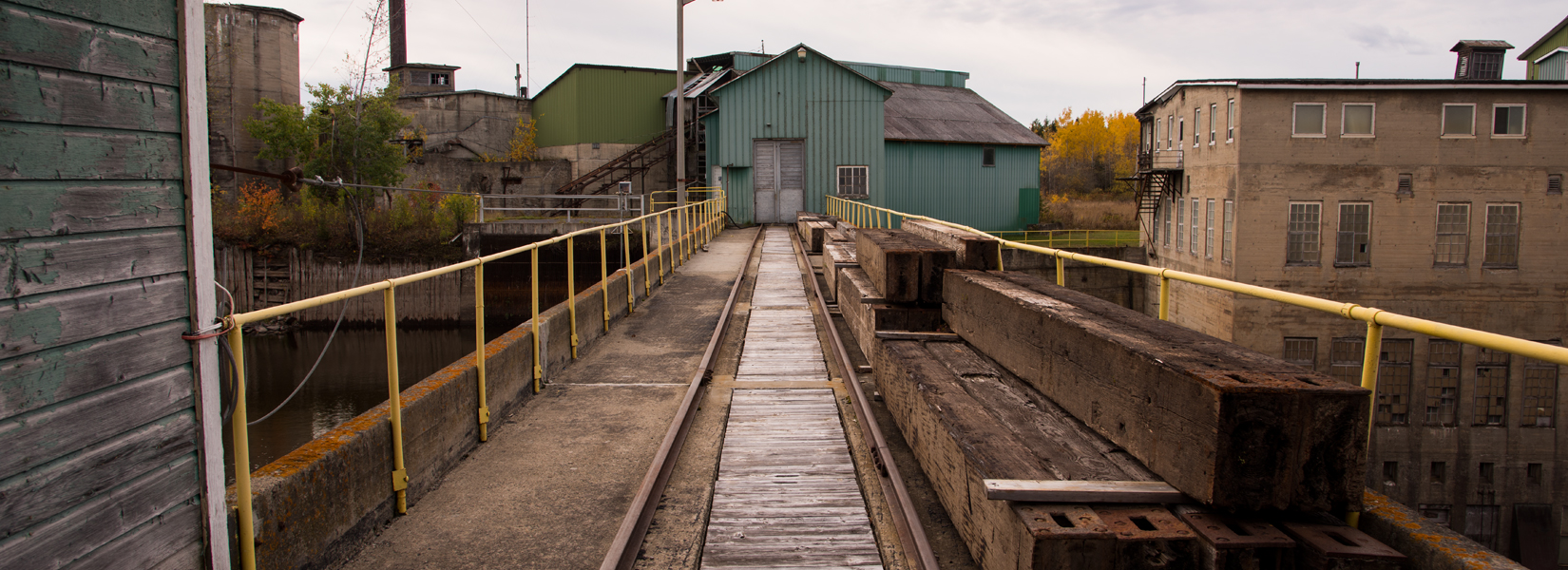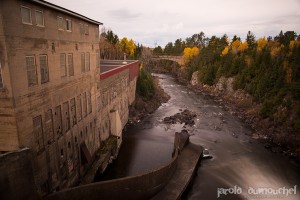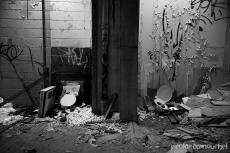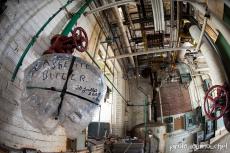Heavily damaged by the time, the old copper mine is closed for several years. While its lower floors are completely flooded with muddy and stagnant water, the ground floor was, meanwhile, weakened by a sedimentary rock ceiling that collapsed in...
The old abandoned pulp and paper complex
Factory, dam and other industrial buildings
For the region, it is a vestige of an industrial era that is now over. Whereas in the past, the factory gave a salary to nearly a hundred employees, the complex is now padlocked and deserted, although monitored by about twenty surveillance cameras. The adventurers are also denounced and prosecuted. Here, the owner does not laugh with those who venture on his property. The vandals who came last spring also have their portrait prominently on the exterior walls.
Originally, the company was the owner of a mill on the site, and then, with the grow of the production, pulp manufacturing forces the construction of a hydroelectric dam to minimize costs.
The upstream basin, resulting from the construction of the dam, was used to accumulate logs. Unloaded higher up the river, they are thus transported to the factory from which they are removed from the water via canals constructed for this purpose. They are then cut in equal length and according to the time of year, are sent to the factory or stacked until they are processed. For its part, the bark was stored in a large concrete silo in order to be used to heat the plant during the winter.
Known as a old stingy, it was said that the first owner has hidding a lot of money in its safe in his office and in is own house located in the front of the plant. He preferred to keep his fortune close to him. It was said to be inconvenient, always complaining about his employees and their cigarette breaks. Even after selling the factory, he came often to visit and did not hesitate to reprimand his former workers.
And today?
Today, nothing hapen on the site. Nevertheless, the current owner is looking for an energy-intensive company that would like to operate the site. The possibility of producing its own electricity is certainly its greatest advantage, but its remoteness from the large urban centers belongs to explaining it, partly less, why the site is still unoccupied, almost fifteen years after its final closure.
Related content
The plant itself is definitively not as great at we saw in other places. Located in the heart of Pointe-Saint-Charles neighborhood of Montreal, this two storey building has no longer the cachet of its heyday. While neighboring buildings are...
It is in 2004 that the old factory Belding Corticelli has been shut down. Since then, it has been abandoned and floors has been waved at the mercy of weather that infiltrate by the roof and windows. Long time ago, there has been manufactured...
For several times I passed by this little factory located in an old industrial area in the Eastern Townships, but I never been inside. Each time, I wondered if it was still active or abandoned. I must say that several tiles were broken, but I was...

